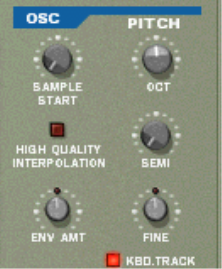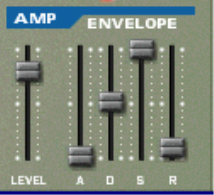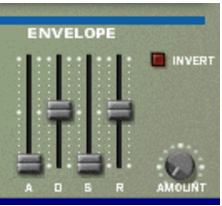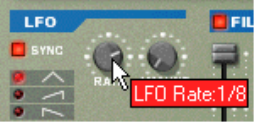For a sample patch, the actual samples are what oscillators are for a synthesizer, the main sound source. The following settings can be made in the Osc section of the NN-19:
|
|
This parameter determines to what degree the overall pitch of the samples will be affected by the Filter Envelope (see “Filter Envelope”). You can set negative or positive values here, which determines whether an envelope parameter should raise or lower the pitch.
|
•
|
|
| Waveform
|
|






